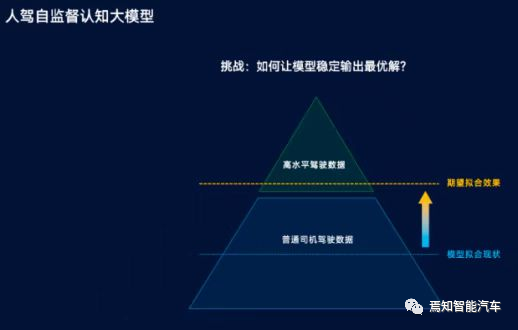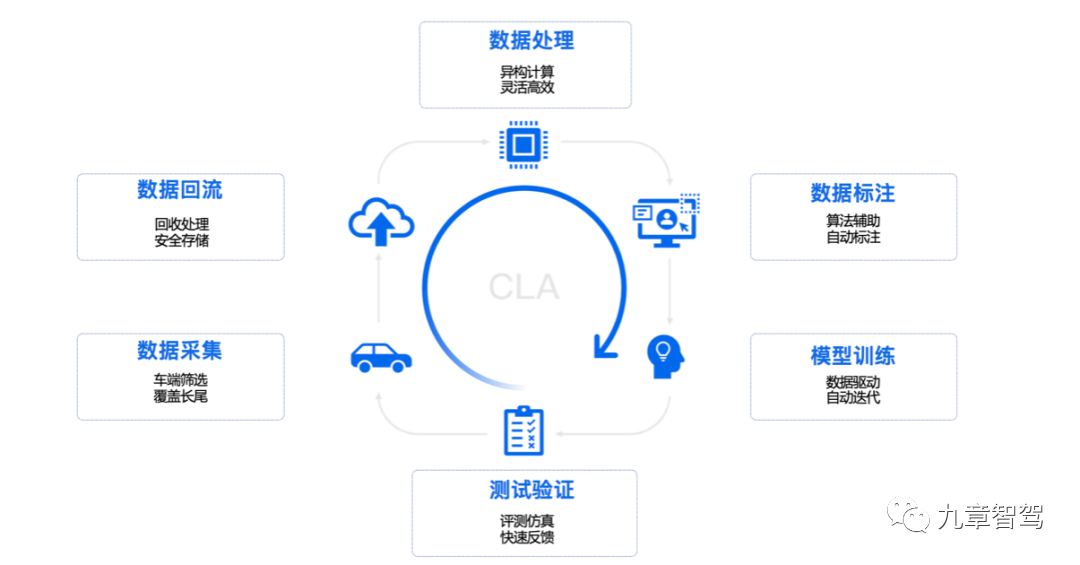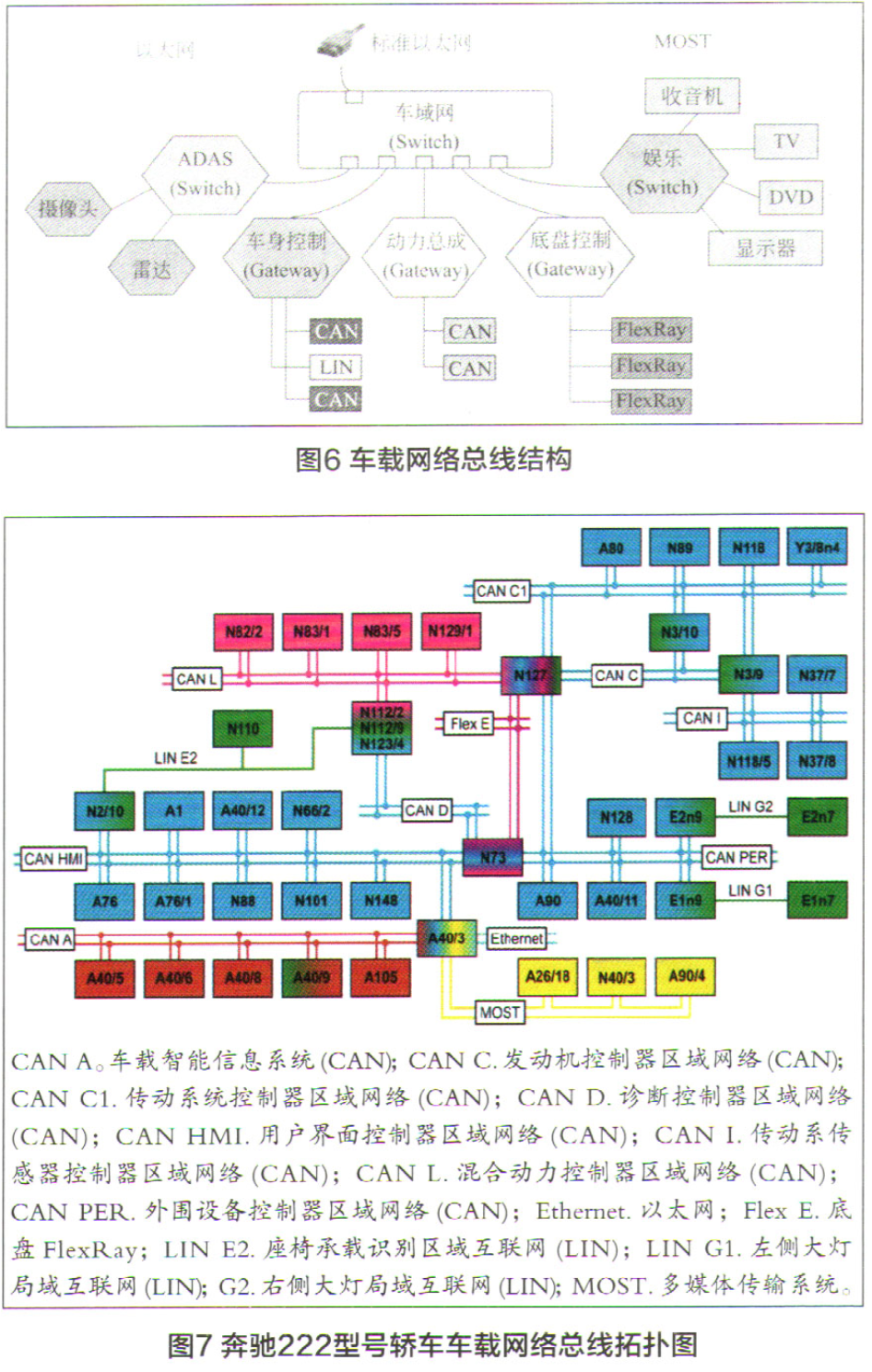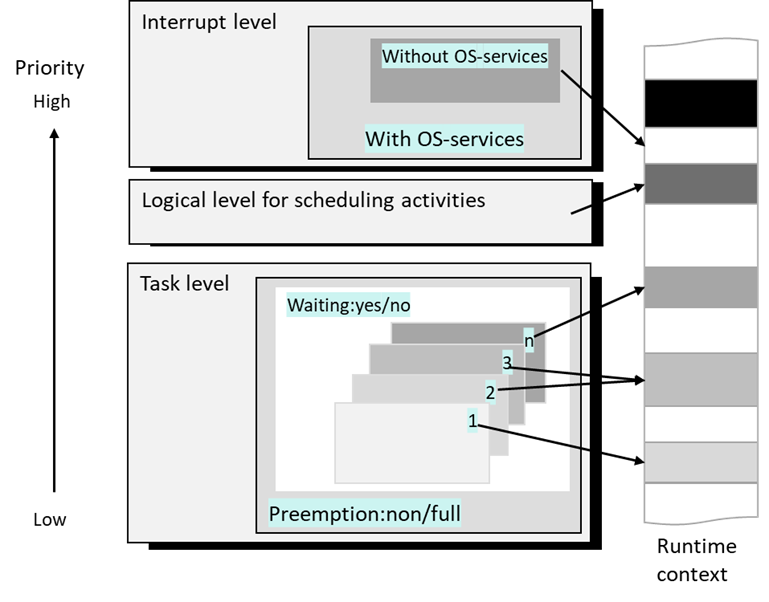自动驾驶安全白皮书
本文节选分享由Aptiv,Audi,Baidu,BMW,Continental,Fiat Chrysler Automobiles,HERE,Infineon,Intel,Volkswagen和Daimler2019年7月联合发布的《Safety First for Automated Driving》 白皮书。
该白皮书基于以下12个原则,介绍了开发和验证自动驾驶系统的基本步骤和参考指南。
Safe Operation: How the system reacts if critical components become unstable or cease functioning
Safety Layer: The system recognizing its limits and minimizes risk in returning control to the driver
Operational Design Domain (ODD): The operating conditions in which the system is designed to function
Behavior in Traffic: The system behavior needs to be easy to understand and predictable for surrounding road users
User Responsibility: The user’s state must be suitable for a takeover procedure
Vehicle-Initiated Handover: If the driver does not comply with a takeover request, the automated driving system must perform a maneuver to minimize risk
Driver-Initiated Handover: Activating and deactivating the automated driving system shall require an explicit driver’s intent
Effects of Automation: Overall evaluation of system safety shall take automation effects on the driver into account
Safety Assessment: Verification and validation shall be used to ensure that the safety goals are met
Data Recording: When an event or incident is recognized, automated vehicles shall record relevant data in a manner that complies with applicable privacy laws
Security: Steps shall be taken to protect the automated driving system from security threats
Passive Safety: Vehicle layout shall accommodate changes to crash scenarios brought about by vehicle automation
本文节选自该报告的2.1章节。该章节介绍了自动驾驶的需求背景,以及保证自动驾驶安全性的性能(capabilities)要求,包括:
FS_1 Determine location
FS_2 Perceive relevant objects
FS_3 Predict the future behavior of relevant objects
FS_4 Create a collision-free and lawful driving plan
FS_5 Correctly execute the driving plan
FS_6 Communicate and interact with other (vulnerable) road users
FS_7 Determine if specifi ed nominal performance is not achieved
FD_1 Ensure controllability for the vehicle operator
FD_2 Detect when degraded performance is not available
FD_3 Ensure safe mode transitions and awareness
FD_4 React to insuffi cient nominal performance and other failures
FD_5 Reduce system performance in the presence of failures
FD_6 Perform degraded mode within reduced system constraints
以下为引用,共计20页。

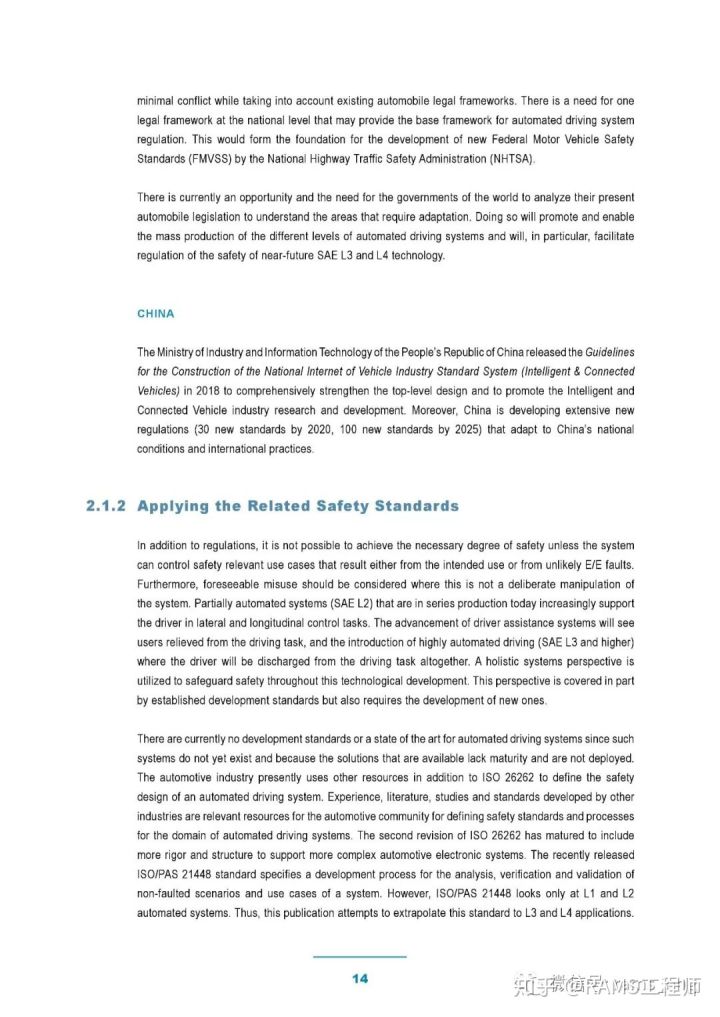
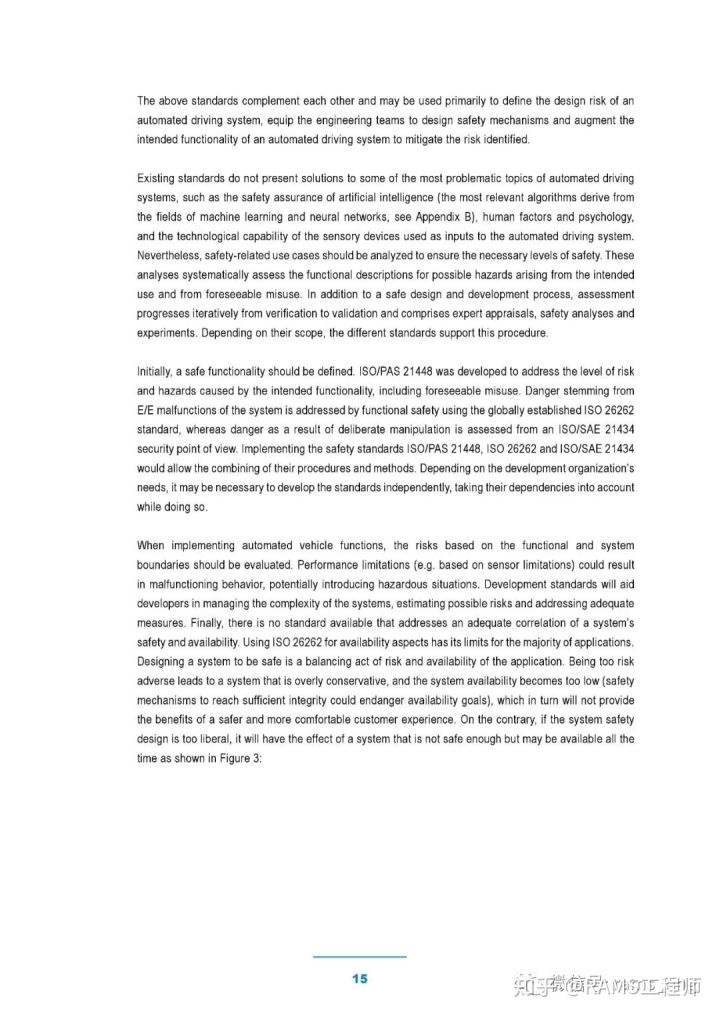


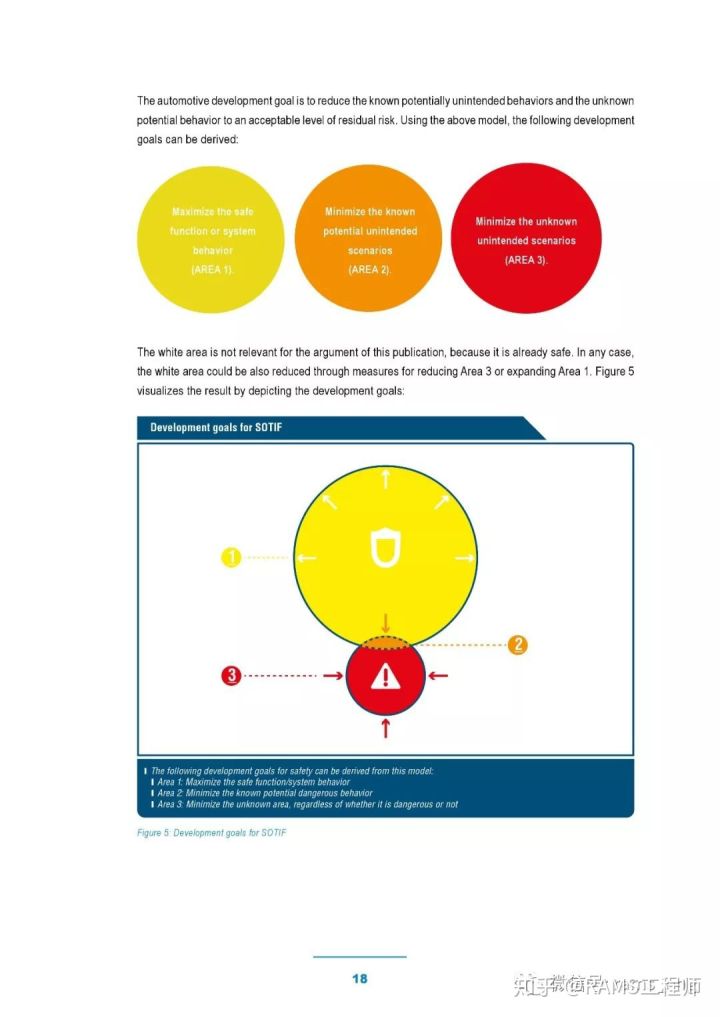


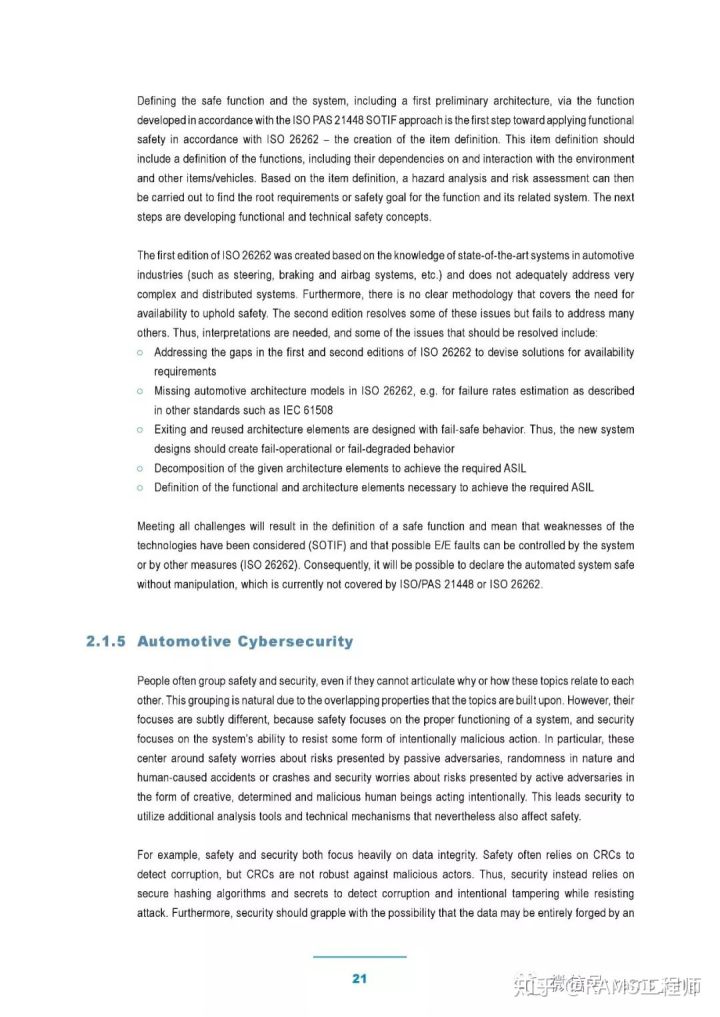
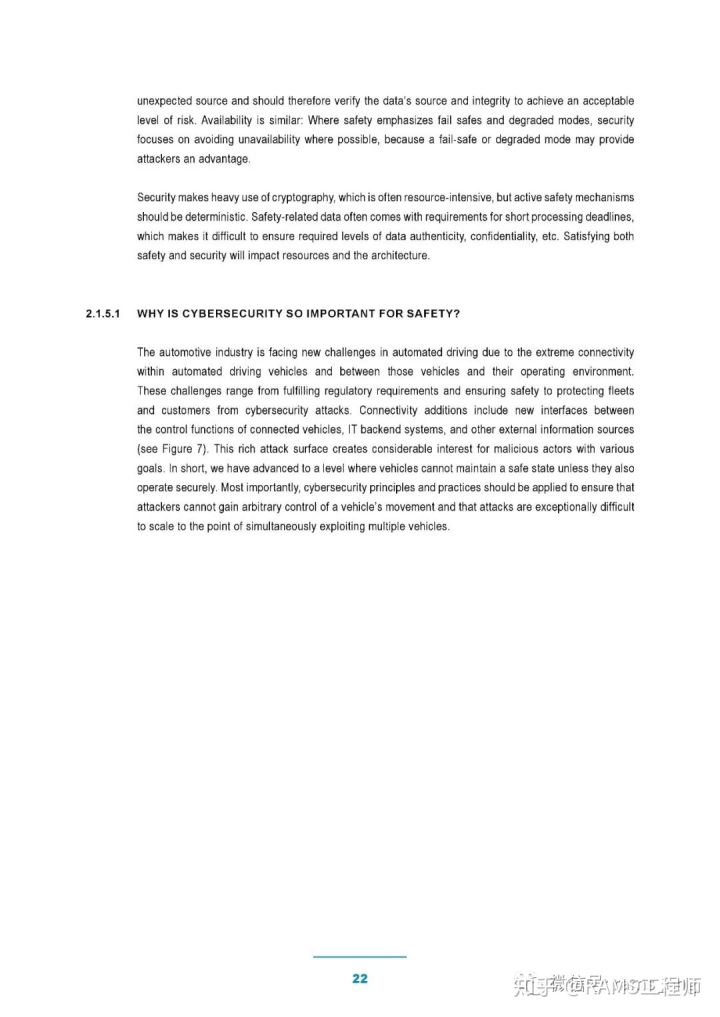


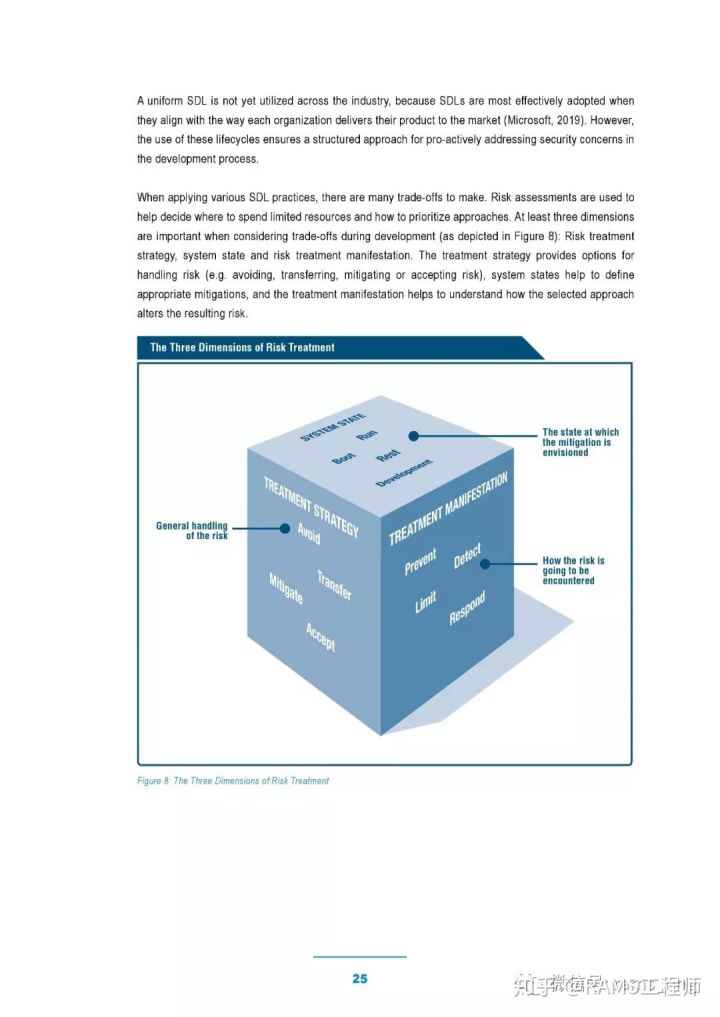


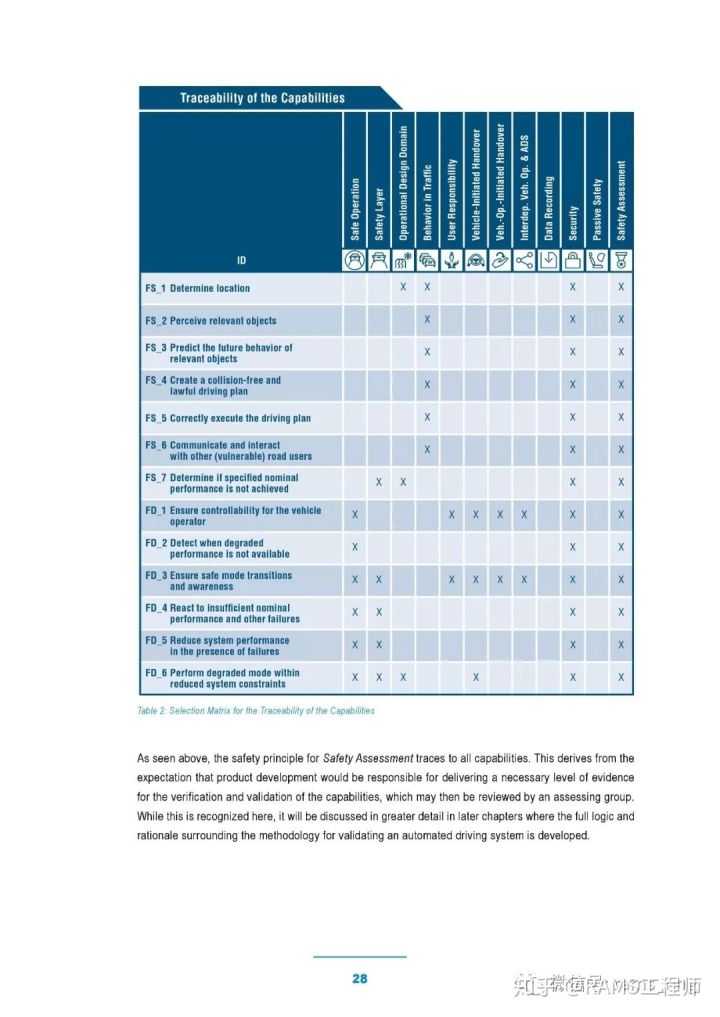
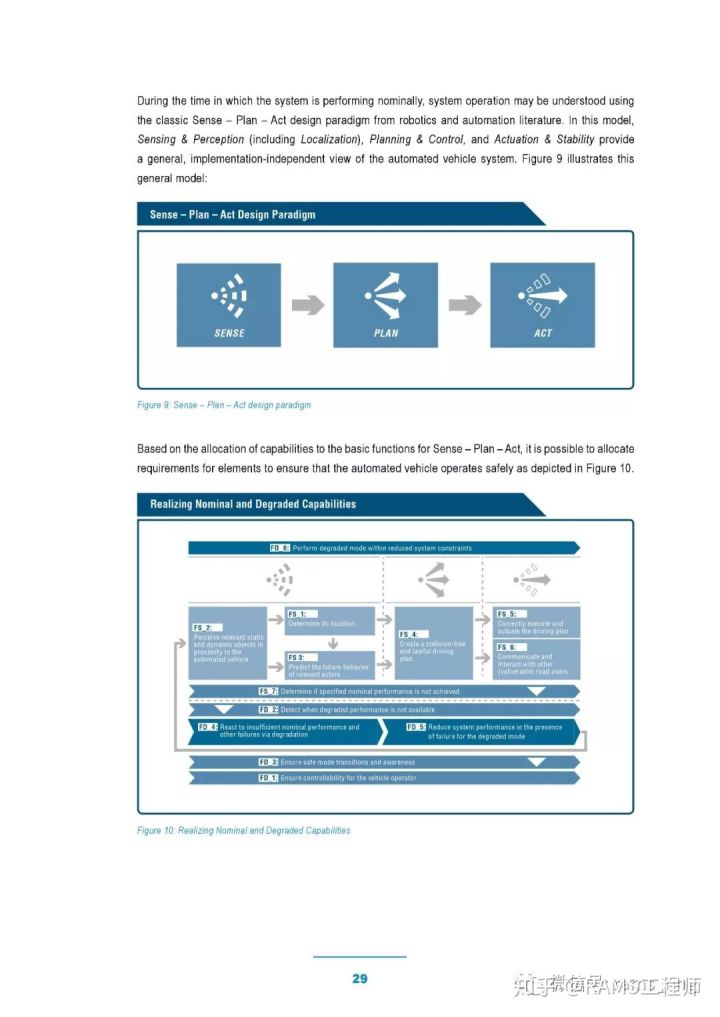


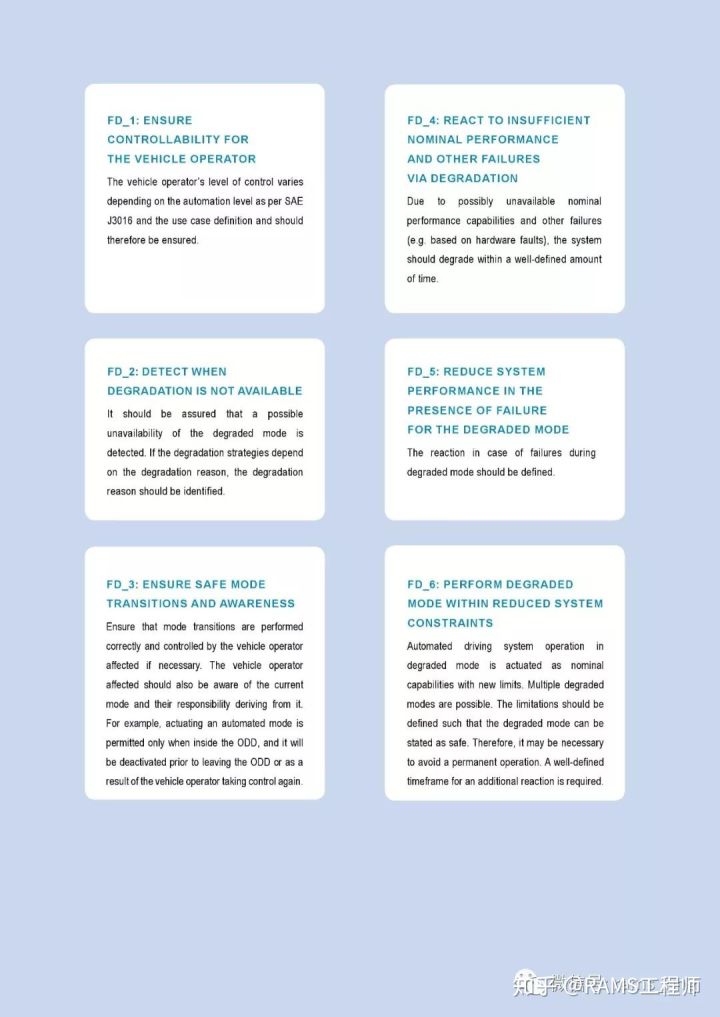
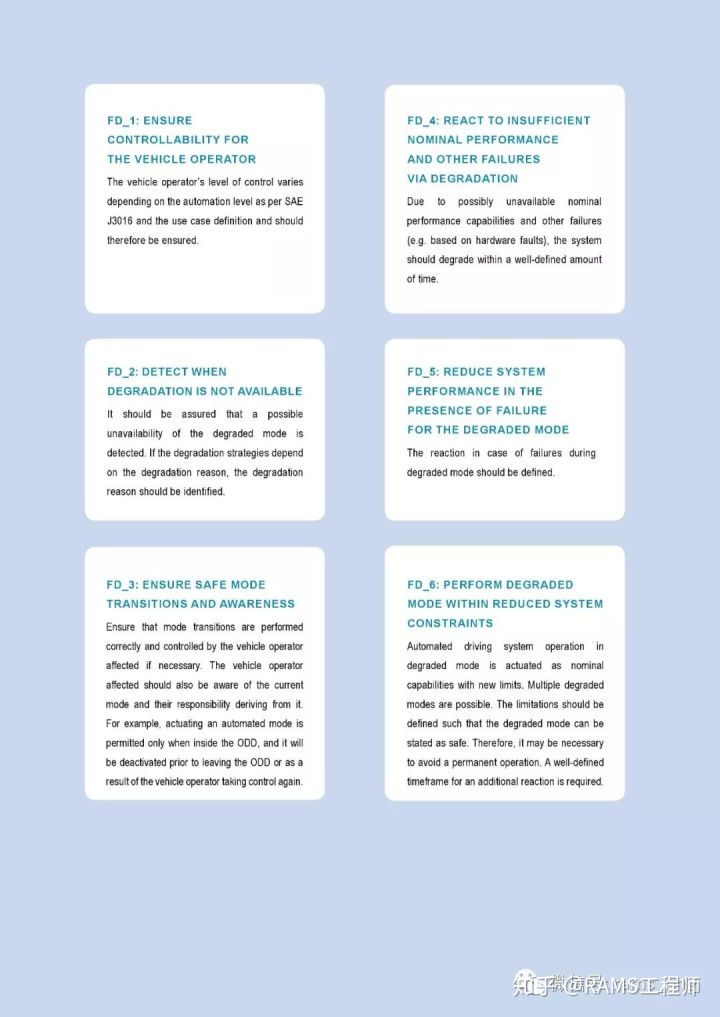
- 用户评论

